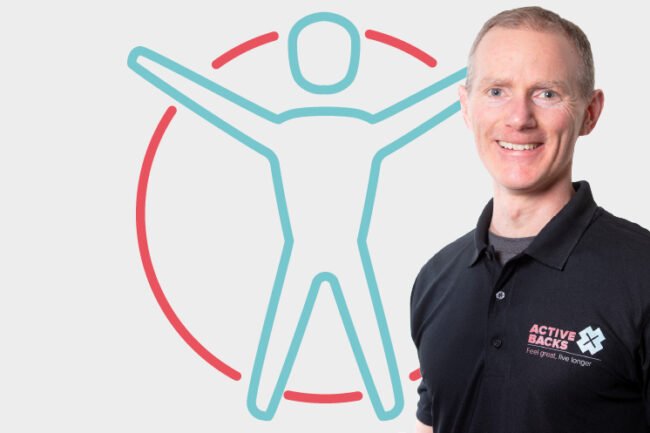22: What to do when bending forwards hurts
22: What to do when bending forwards hurts
This episode is entitled “What to do when bending forwards hurts” You will learn:
- Why bending forwards hurts your low back
- How to bend forwards such that it doesn’t hurt
- How to rehabilitate your back to cope with long periods of bending

Why bending forwards hurts your low back
Pain is a biological alarm system. It’s there to warn you that something is wrong and to stop doing it, or at least to do it in a way that it doesn’t cause you pain. If your back hurts bending forwards, don’t do it in that way. Your lower back hurts bending forwards because your neurological system is telling you there is a problem here. If you persist in that activity, at the very least you’re going to prevent your back from healing. But you could also aggravate the problem. You could sensitize your nervous system, increase the sensitivity of the pain pathways and end up with chronic pain that persists beyond its biological value.
Your lower back hurts bending forwards because it needs to. There are whole bunch of possible things that can go wrong with your back. Most of which will result in pain, at least in the short term. There’s a huge proportion of people walking around who have disc prolapses, disc herniations, bulges, but that don’t have pain. Approximately 40% of 40 year olds don’t have lower back pain. The diagnosis doesn’t matter because your back can heal itself over most assaults, given the right conditions. It doesn’t matter what the cause, what’s causing your pain. The important thing is to stop doing the thing that hurts.
How to bend forwards such that it doesn’t hurt
Imagine your lower back when you’re standing up nice and tall. When you eliminate that curve inward and slightly arch forwards, or at least flatten that curve, you get pain, so don’t do it. If you need to bend forwards, lightly brace and tighten up your abdominal muscles so that you maintain the small of your back. While doing so, push your hips backwards. Bend the knees and hinge the hips at the same time, but don’t bend your back. Maintain the small of your back.
How to rehabilitate your back to cope with long periods of bending
Repeat that technique and gradually build up strength and compassion and capacity in that movement. Do it very gradually. If you can do hip hinging and bending your knees simultaneously 10 times without back pain do it 10 times, but several times a day for three days. On the fourth day, add in numbers 11 and 12. By then you should have built the endurance and capacity in your lower back to cope with that. If bending forwards hurts your low back after 10 minutes, use the techniques I described for 10 minutes. Break it up, do it a few times in a day, 10 minutes, three times separated throughout the day and then go for your 11th and 12th minute and just gradually build it up. A few days later, add in 13, 14, 15 minutes.
The rate at which you should step it up depends on the tissue that you’ve injured and your own capacity for healing, which varies enormously. As we get older, we heal much more slowly. The speed of your rehabilitation willdepend on not aggravating that tissue and on the nature of the tissue. Muscle heals rapidly because it has a fantastic blood supply, disc heals slowly because it has very limited, direct blood supply. It will also depend on the sensitivity. Some people have very minimal tissue damage, but a huge amount of sensitivity. Go gently.


